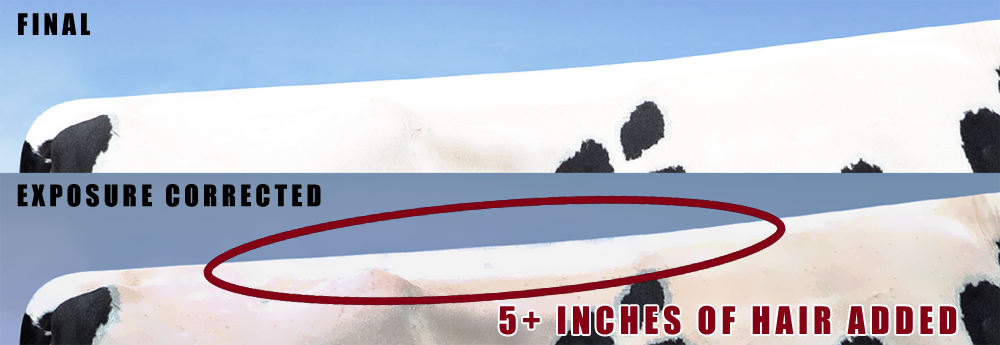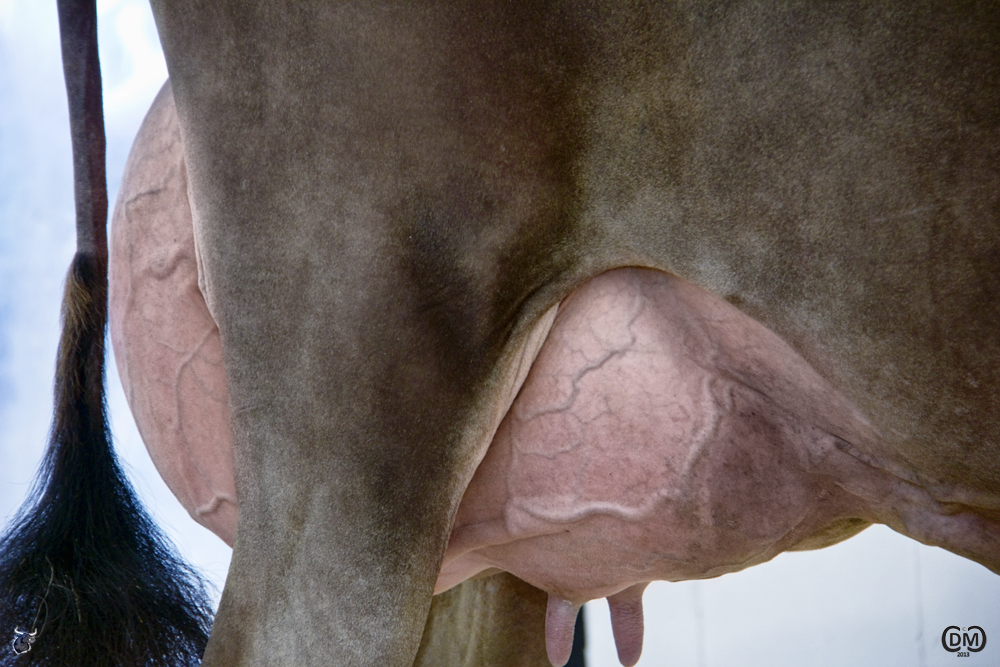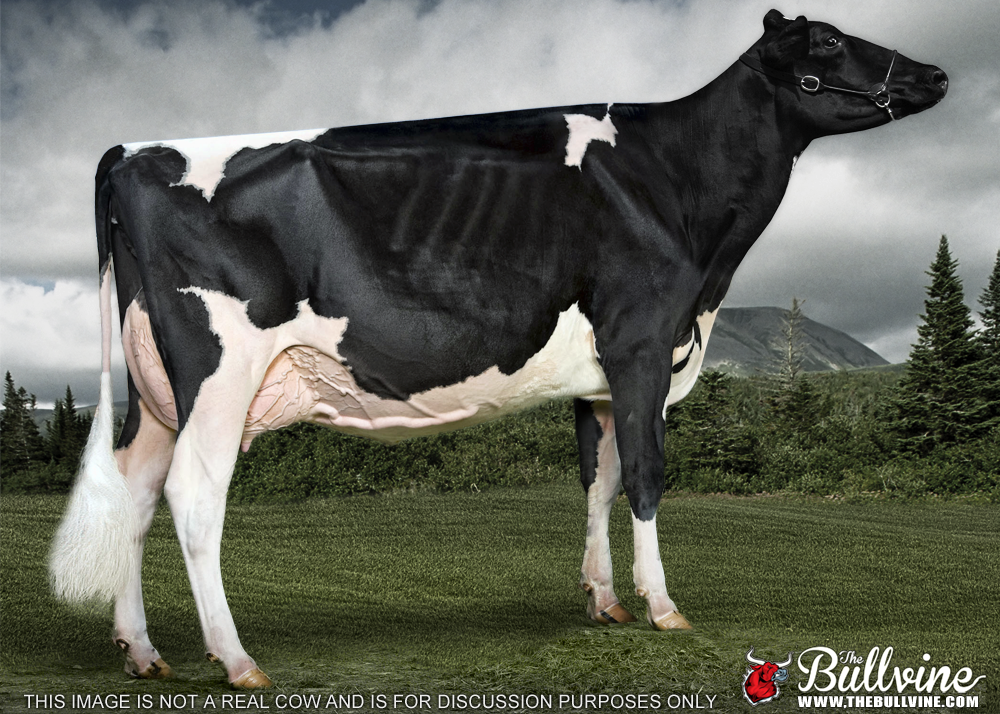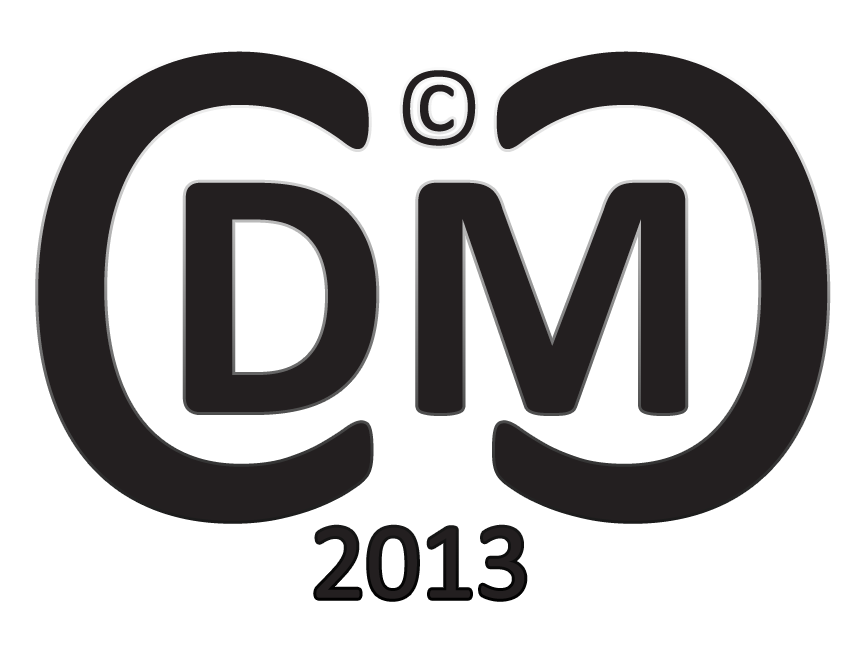Would you buy genetics from this heifer?

I would NOT! However, it has nothing to do with her pedigree, because I don’t even know her pedigree. The reason I would not buy genetics from this heifer is simply because I cannot trust that what I see in the picture is what I will actually get. You see this heifer, who looks for the most part to be a pretty decent heifer, actually has some major flaws that the current ethical standards of many photographers are more than willing to cover up. The most major flaw that is blatant to the eye, when actually beside this heifer, is how weak loined she is.

Think about it. When was the last time you saw a dairy cow picture where the animal had a weak loin? It doesn’t happen anymore. In talking with a few photographers, they all say A) Is it really that bad? and B) ‘If I don’t do it`, breeders will not call me to take their pictures anymore.” The answer to both these questions is “Do You Really Think I am That Stupid?”
“Is it really that bad?”
First, compare the two pictures below. They are identical shots. The only thing changed in the bottom picture is that she has had about 6 inches of hair added to the middle of her topline. This is something that the show ring does not even find acceptable anymore. Yes. I know you are going to say that this heifer is an extreme case. But also think about all the heifer pictures you see these days. When was that last time you saw one with a weak loined animal? Has the breed advanced so far that there is no longer an issue with loin strength? Should all sires be ranked 7+ for loin strength? I don’t think so. Another question I ask is when was the last time you saw a 6+ month old calf that stands uphill? And yet, you do see that in all their pictures that are taken these days.


“If I don’t do it breeders will not call me to take their pictures anymore.”
So I think most of you can see that it is pretty obvious how blatant this issue is. So then why do you continue to support those that are working very hard to deceive you? Each time you hire a photographer that finds this practice acceptable, or buy semen from a stud that supports these photographers, you are in a sense saying, “I am okay with being lied to.”
You see if a bull stud told you the sire you are using is a +18 (CDN) or +4 (US) for type but then only supplied a bull that was a +2 would, you be pissed? But that is what you are doing when you are supporting these photographers who have no regard for ethical standards (Read more: Introducing the Dairy Marketing Code of Conduct, Dairy Cattle Photography – Over Exposed, No Cow Is Perfect – Not Even In Pictures and Has Photo Enhancement Gone Too Far?). Yes, of course, there are some that are trying their best in the current marketplace. (Read more: Tarred With The Same Brush). But, as a whole, the industry is turning a blind eye to this issue. The funny thing is it is just like drugs in baseball (Read more: The Big Bad Wolf of the Dairy Industry, Does The Dairy Genetics Industry Have A Drug Problem? and Lance Armstrong, Drugs and the Dairy Industry), you can only turn a blind eye for so long before it comes back and gives the whole industry a black eye.
Stop the Laziness
While I was taking these pictures the other day, I discovered many new issues with current photography practices. The biggest one is just plain old laziness. They are too lazy to do it right. “Photoshop saved careers.” they say. I say “Photoshop has made you lazy.” Now many photographers are not even bothering to take the effort to put up lights anymore. That is photography 101. Always control the light. Otherwise the quality of the image you get is crap. These are all little things that the human eye catches but you don’t see in most of the dairy cattle photography anymore. That is because they are just too lazy to do it right.

It Is Possible To Do It Right
Now some would say, “Hey Andrew, if you think it is that easy, show me that you can do it?” So I did. I went to the effort to take the picture of three nice heifers that were by no means big time show heifers. They are just good quality heifers that needed a good quality picture. (Please note – Although I have been on the team prepping hundreds of cattle for pictures, this is only the second time in my life of me actually taking the side shots. The last time was over 10 years ago).
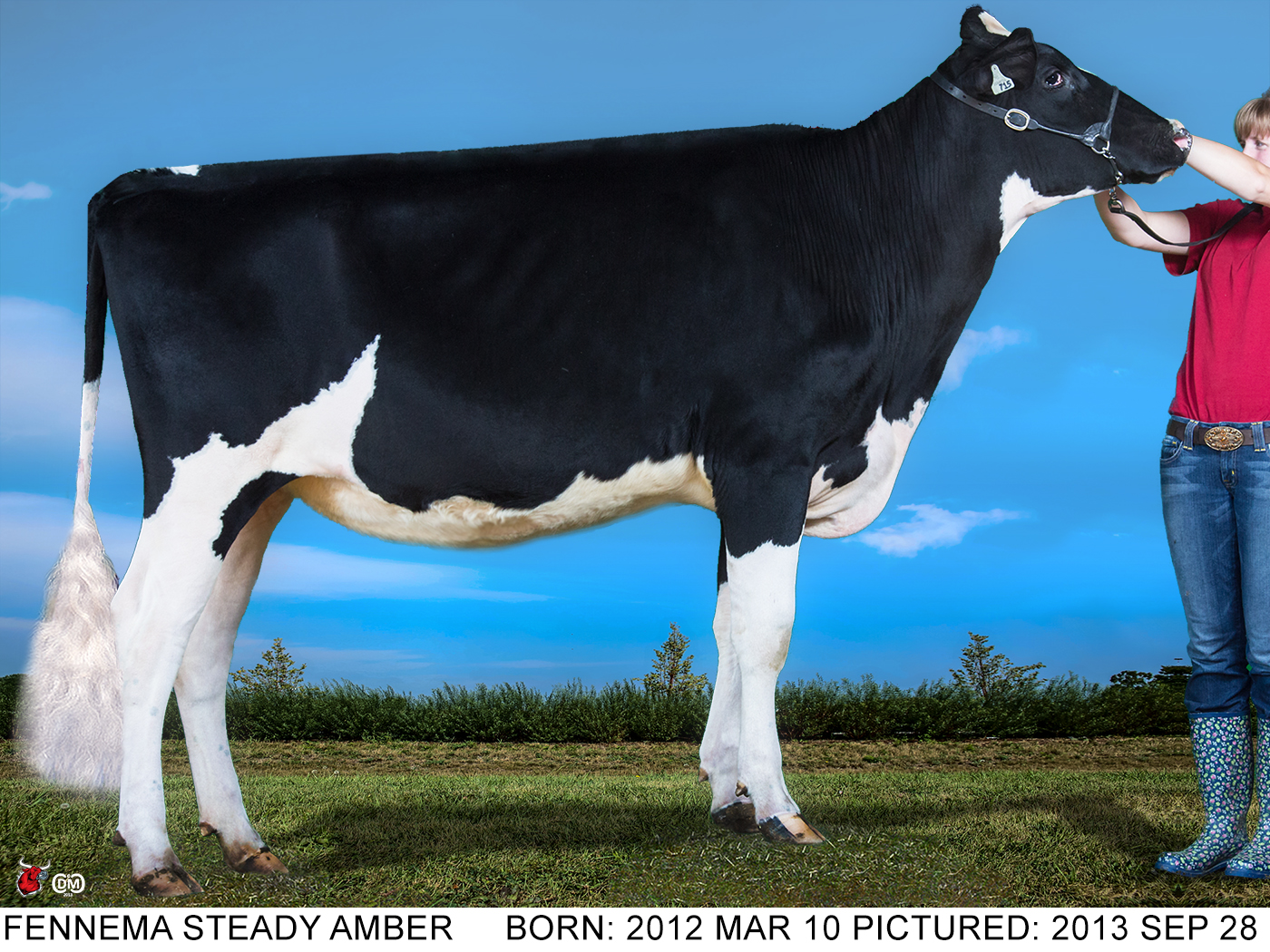
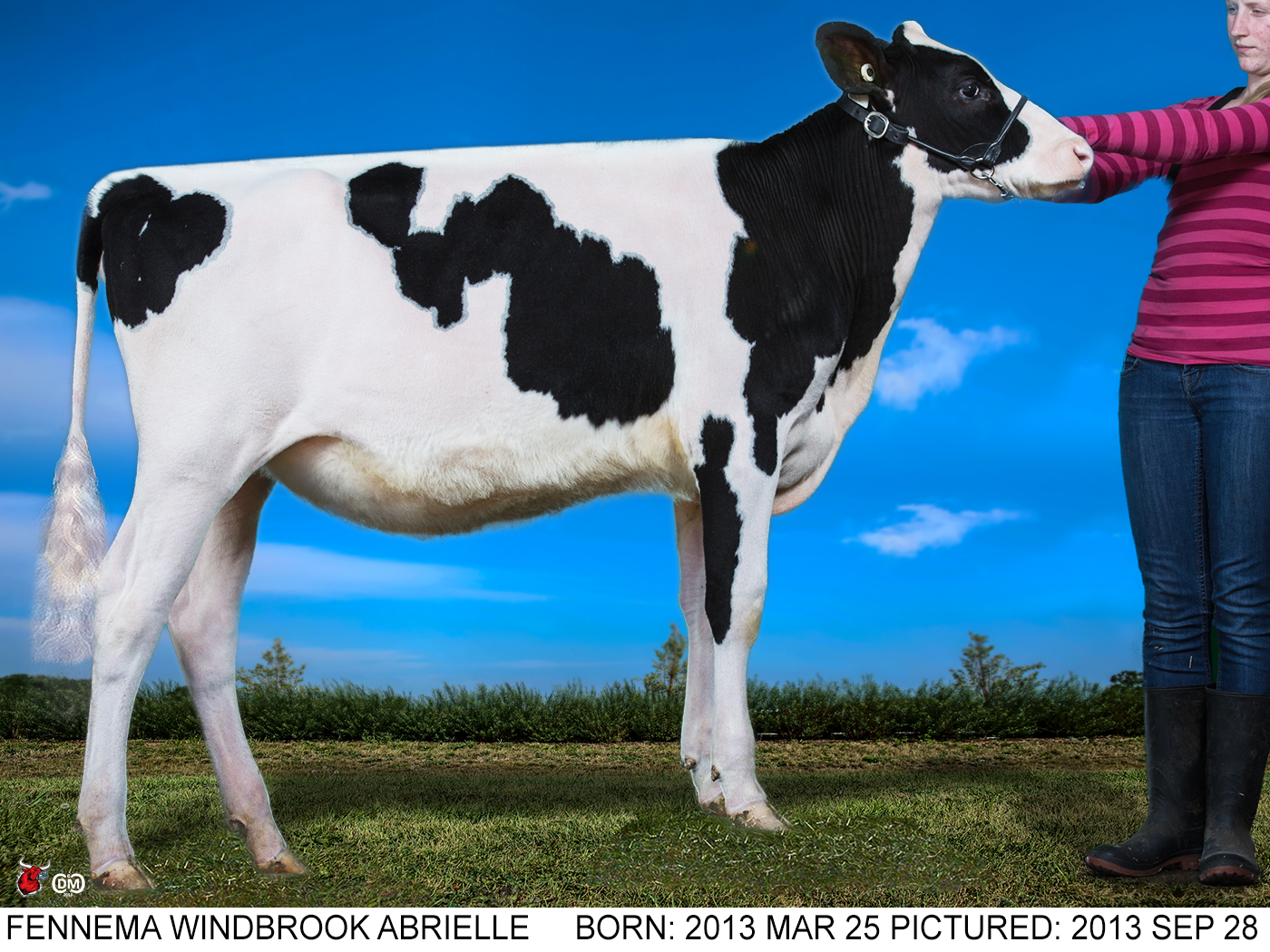
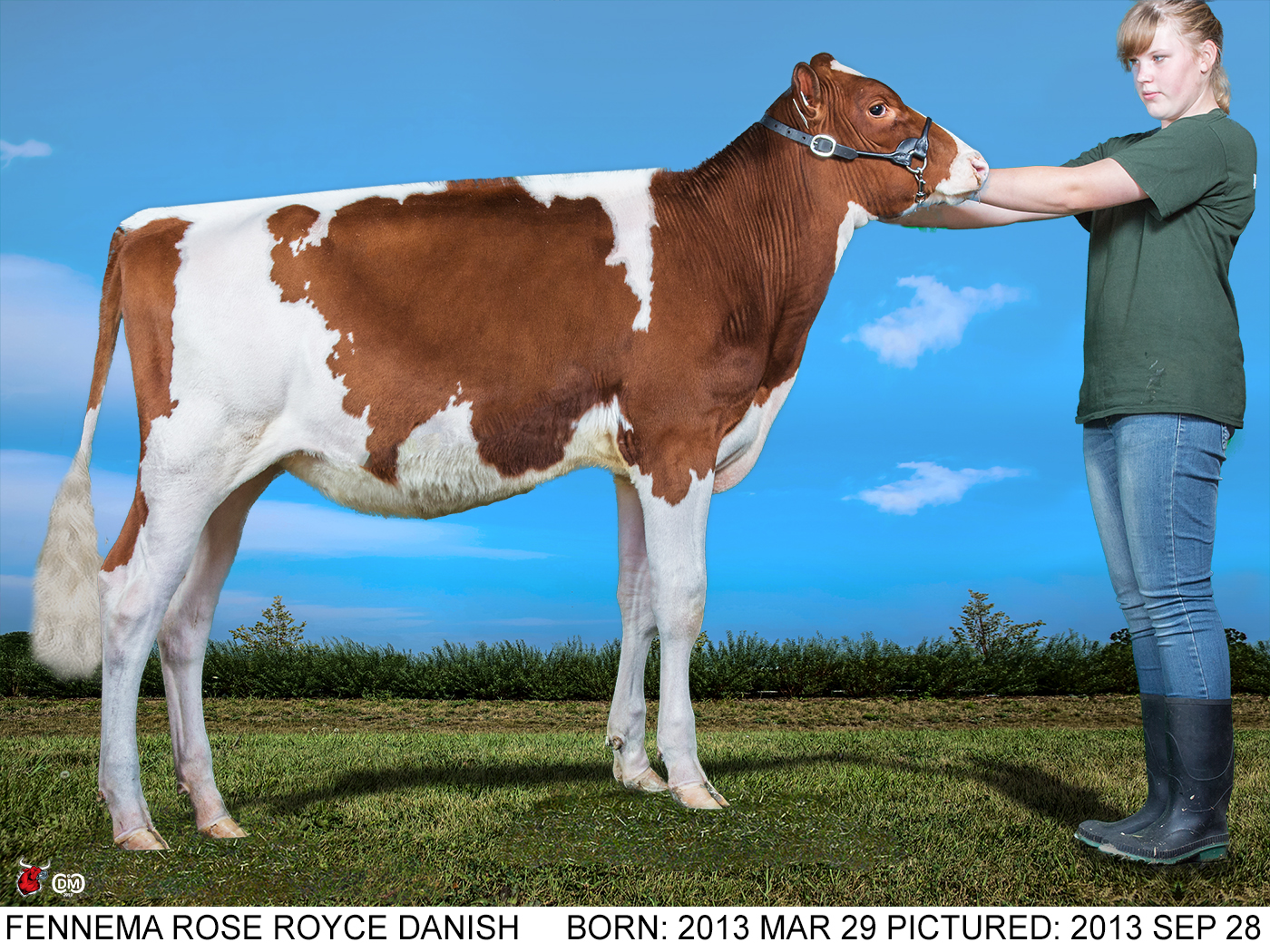
The interesting part was that in doing these pictures I found that I actually had to take more hair off than I had to add. I could have done it with the clippers before the photo-shoot, but chose not to as these are also 4-H calves and they have their achievement day in two weeks’ time. The other part I noticed is, you don’t need to jack their front ends up 2 feet and wrench their necks like a chicken. Simply put a small block under their front legs and away you go. So you say, “It’s easier to do it the way they are currently doing it.” I say it’s easier to put up a couple of lights and away you go. You get a better quality picture that the viewers can appreciate and more importantly trust.
The Bullvine Bottom Line
What I am saying is not new. We all have known it to be true for years. The problem is, instead of taking action to make change, we are all comfortable to sit back and be lied to. Well guess what? I am tired of being lied to. I am tired of being slapped in the face every time one of the photographers thinks they are pulling a “fast one” on everyone and being lazy to boot. Instead of compromising your ethics, I say get off your “butt” and do it right. Because “Do You Really Think That We Are All That Stupid?”
To read more about this check out The Dairy Marketing Code of Conduct
To get a copy of the Dairy Marketing Code of Conduct please click here.
If you believe that there is a need for a ethical standard in marketing dairy cattle genetics please like and share this post.






